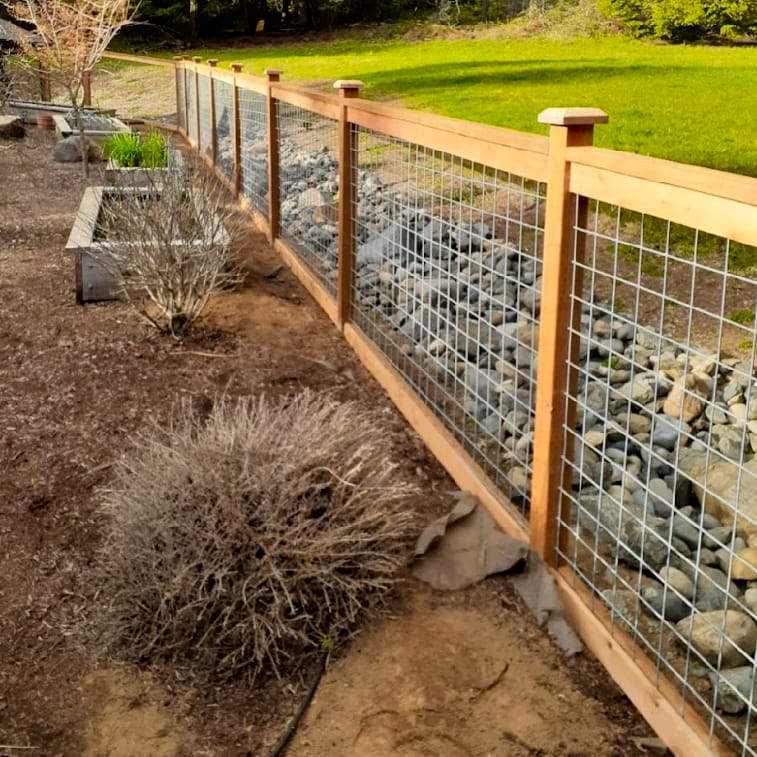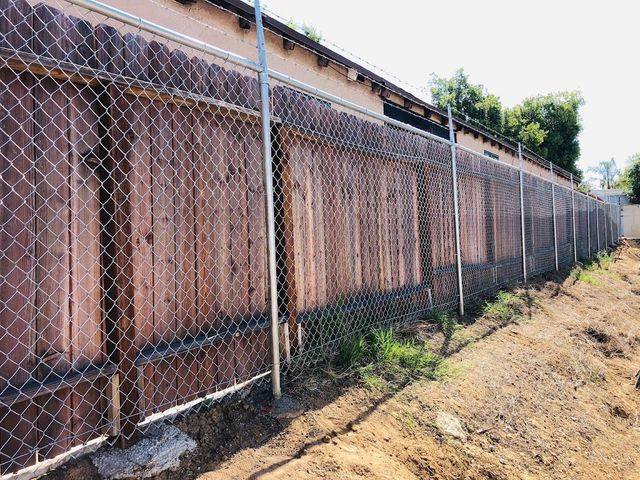Featured

As sustainability becomes an expanding priority for services and homeowners, the need for environment-friendly structure products extends to outside areas, consisting of fencings. Typical secure fencing products such as metal, plastic, and wood can have substantial environmental influences, from deforestation to chemical therapies and plastic waste. Nonetheless, there are several eco-friendly fencing options readily available that not only lower the carbon impact yet also offer durability and aesthetic appeal. Allow's discover some of one of the most popular and sustainable fencing materials that can aid you go environment-friendly while still boosting your building's safety, privacy, and design.
- Bamboo Secure fencing. Bamboo is one of one of the most lasting products on the marketplace, and it is increasingly used in fencing building and construction because of its rapid development and stamina. Unlike hardwood trees, bamboo is a turf that can grow back totally within just a few years, making it extremely eco-friendly. It's naturally immune to insects and rot, which means it doesn't require rough chemicals or therapies, making it a green option.

Advantages: Bamboo fencings are resilient, low-maintenance, and eco-friendly. They are naturally resistant to termites and dampness, minimizing the need for chemical preservatives. In addition, bamboo aids lower dirt erosion as a result of its deep root systems. Factors to consider: Bamboo can be much more costly than some typical wood fence choices, and it may not be suitable for areas with extreme cool or freezing temperatures, as it can become fragile in time. 2. Recycled Materials Fence. Numerous suppliers currently offer fencings made from post-consumer plastic, recycled timber, or even repurposed metal. Several composite products, for instance, are made from recycled plastic bottles, wood scraps, and various other materials that would certainly or else be disposed of.
Conveniences: Recycled product fences assist preserve natural resources, lower contamination, and reduced the ecological impact of the manufacturing process. They can likewise provide outstanding sturdiness, resisting decay, mold and mildew, and termites. Factors to consider: While recycled material fencings are green and highly sturdy, they may not have the exact same natural aesthetic that some home owners look for. Makers now provide layouts that simulate the appearance of timber or stone. 3. Compound Fence. Composite fencing is made from a mix of timber fibers and plastic, typically incorporating recycled materials. This mix creates a very resilient, low-maintenance fence that does not need regular paint or discoloration, making it a sustainable option. Composite fences are resistant to rot, insects, and weathering, which implies they can last for many years without the need for regular replacements.

Advantages: Compound fencings are lasting and can withstand rough weather condition problems, decreasing the demand for repair work or replacements. Considering that composite products typically include recycled web content, they help minimize plastic waste. Additionally, they do not require dangerous chemicals or treatments. Considerations: Composite fencings can have a greater in advance price than typical timber or plastic, though their toughness and decreased upkeep costs usually make them a much more affordable option in the lengthy run. 4. Living Fences. Living fences, also called hedgerows, are an environmentally friendly and cosmetically pleasing choice that entails planting thick bushes, trees, or climbing up plants along your residential or commercial property line to develop a natural barrier. Popular plants for living fences consist of boxwood, privet, and holly. These plants can be grown to give privacy, windbreaks, and noise reduction while adding to environmental wellness.
Benefits: Living fencings promote biodiversity, improve air quality, and soak up co2, making them one of one of the most eco-friendly fence choices. They likewise supply an all-natural habitat for birds and bugs and can decrease environmental pollution and assist manage temperature levels in your lawn. Factors to consider: Living fences require regular upkeep, such as cutting, watering, and sometimes pest control. They also take time to establish and might not give immediate privacy compared to solid timber or plastic fencings. 5. Cedar and Redwood Fencing. Cedar and redwood are popular all-natural timber choices for fencings. These materials are resilient and naturally immune to rot, insects, and wetness, which implies they commonly don't call for the usage of harmful chemical therapies. When sourced from sustainably taken care of woodlands, cedar and redwood fencings can be an ecologically pleasant selection that supplies both appeal and durability.
Advantages: These timbers are eco-friendly, sustainable, and offer outstanding durability and natural charm. Cedar and redwood likewise have a reduced environmental impact when collected responsibly, making them an eco-friendly option for many home owners. Considerations: While cedar and redwood fences have environmental benefits, they do still require occasional upkeep and are more pricey than various other wood options. It is very important to make sure that the wood is sourced from lasting forests to maximize its environmental benefits. 6. Rock and Block Fencing (Reclaimed) Rock and block fencings are low-maintenance and unbelievably sturdy, and they can be environment-friendly when made from reclaimed products. Redeemed rock and brick are commonly salvaged from old structures or construction projects, decreasing waste and saving natural deposits. These products offer a classic look and are highly immune to weathering, making them a durable option for fencing.
Conveniences: Redeemed stone and block are resilient, visually pleasing, and require marginal upkeep. By repurposing these products, you help minimize the need for brand-new resources and decrease waste in land fills. Factors to consider: The installment of rock and block fencings can be labor-intensive and extra expensive compared to other materials, but their long life and low upkeep needs can make them cost-efficient in the future. Final thought. Environment-friendly fence alternatives are not only helpful for the environment yet likewise use sturdiness, low upkeep, and aesthetic allure. Whether you choose for bamboo, recycled materials, composite fencing, living fencings, or lasting timber like cedar and redwood, there are lots of methods to reduce your ecological footprint while boosting your residential or commercial property's look. By selecting these eco-conscious products, you can contribute to a much healthier planet and produce an exterior room that shows your worths.
Latest Posts
Raise Your Property with Montana Fencing Products
Published Apr 22, 25
1 min read
NAPA AutoCare Certified: Trust Montclare Auto Repair for Quality Service
Published Apr 22, 25
2 min read
Searching for Auto Repair Shops Near Me? Visit Car-X St. Louis for Quality Solutions
Published Apr 22, 25
1 min read
More
Latest Posts
Raise Your Property with Montana Fencing Products
Published Apr 22, 25
1 min read
NAPA AutoCare Certified: Trust Montclare Auto Repair for Quality Service
Published Apr 22, 25
2 min read
Searching for Auto Repair Shops Near Me? Visit Car-X St. Louis for Quality Solutions
Published Apr 22, 25
1 min read